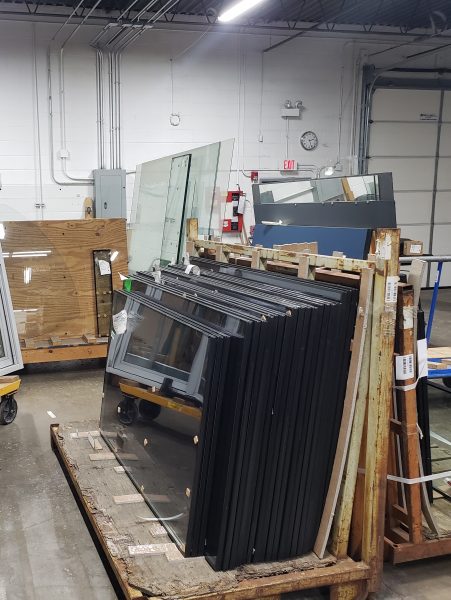Insulated Glass
Manufactured to Last
We use only dual seal units. The primary seal keeps the glass adhered to the spacer while the secondary seal prevents moisture from entering the dry airspace.
Insulated glass must be manufactured in a controlled environment.
The glass is washed and dried then inspected for flaws. The silica is then heated and funneled into the spacer. The primary seal is applied to the spacer and then sandwiched between the lites of glass. The secondary seal is then applied around the perimeter of the unit.
For warranty purposes, most insulated glass has a marking inside the band showing the manufacturer and the date.

Types of glass used for insulated glass
A better performing insulated glass make-up will not only keep the building compliant to the current energy code, it will improve the comfort of the tenants and reduce energy costs.
Insulated glass is typically made with a clear or tinted exterior lite over a clear lite with a Low-e coating.
Clear
- Gives good visibility looking in and out
- Does not interfere with window signage
Tinted (Gray, Bronze, Green, Blue, Extra Dark Gray)
- Blocks direct sunlight
- Helps the building stay cooler during the summer
- May give a degree of privacy
Reflective (Gray, Bronze, Mirropane)
- Reflects direct sunlight
- Gives a degree of privacy, especially when using Mirropane
Spandrel
- Backed on paint to hide the building’s structure
Standard Low-e (Energy Advantage)
- Offers some heat reflection
- Less tint than higher performance Low-e coatings
- Reduces condensation
Higher Performance Low-e (Solarban 60)
- Meets Energy Code requirements in most applications
High Performance Low-e (Solarban 70)
- Delivers maximum comfort while reducing energy costs
Types of glass treatments:
Annealed
- Used when glass is not required to be impact rated and is not subject to thermal stress
- Lower strength
- Cracks or breaks into shards
Tempered
- Used when the glass has to impact rated or is subjected to thermal stress
- High Strength
- Shatters into tiny pieces
Heat Strengthened
- Used when glass is subjected to thermal stress
- High strength
- Cracks, but does not shatter
Laminated
- Used when the glass needs to be impact rated or opaque (White Laminated)
- May crack or break, but stays in one piece